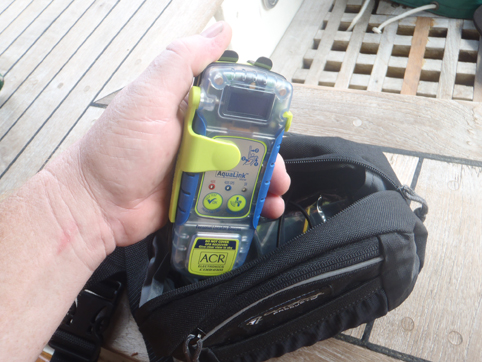
The August 2012 issue Practical Sailor examined how the introduction of satellite emergency notification devices (SENDs) like the SPOT was blurring the line between multi-function satellite communication devices and those designed exclusively for distress signaling-such as 406-MHz Emergency Position Indicating Radio Beacons (EPIRBs) and Personal Locator Beacons (PLBs). In the October issue of Practical Sailor, we will take a look at the design implications when a 406-MHz PLB, the AquaLink View 406-MHz GPS from ACR, enables expanded services for paid subscribers, including a very SPOT-like ability to send canned text (SMS) messages and location maps to multiple cell phone or email addresses.
According to Mikele DArcangelo of ACR, the federal and international agencies charged with overseeing the satellite distress signal network COSPAS-SARSAT do not want these new PLB functions marketed as anything but a way to test that the device is working properly.
This is very important as NOAA and COSPAS-SARSAT do not want our service being marketed as an I’m OK and check-in service, DArcangelosaid.
Apparently, some retailers arent getting the same message. Every where I turn, I see online retailers and product-review sites touting the AquaLink View 406s text-messaging capability as a way to send location maps and to tell loved ones Im OK via email. Even some well-respected marine electronics writers are highlighting this ability.
While we like the AquaLinks advanced testing features, we still have some concerns about this evolving technology. Our chief worry is this: If people start using an emergency device for non-emergency messaging, will this inhibit the PLB’s performance in an actual emergency? More specifically, our technical staff at Practical Sailor had questions about battery life. Will the testing deplete essential battery life well want in emergency?
The good news is, based on what we found, the AquaLink View had more than enough battery power for the required 24 hours of emergency signaling, even after wed maxed out its messaging capability. (Look for the full report in our October 2012 issue.)
Nevertheless, Im disturbed about the disconnect in how this new functionality is being promoted by some retailers and how it is supposed to be actually used.
If ACR is officially characterizing the SMS capability solely as tests, and retailers and product reviewers are promoting it as something else, it only muddies the waters around a class of devices that is desperately in need of more clarity.


































